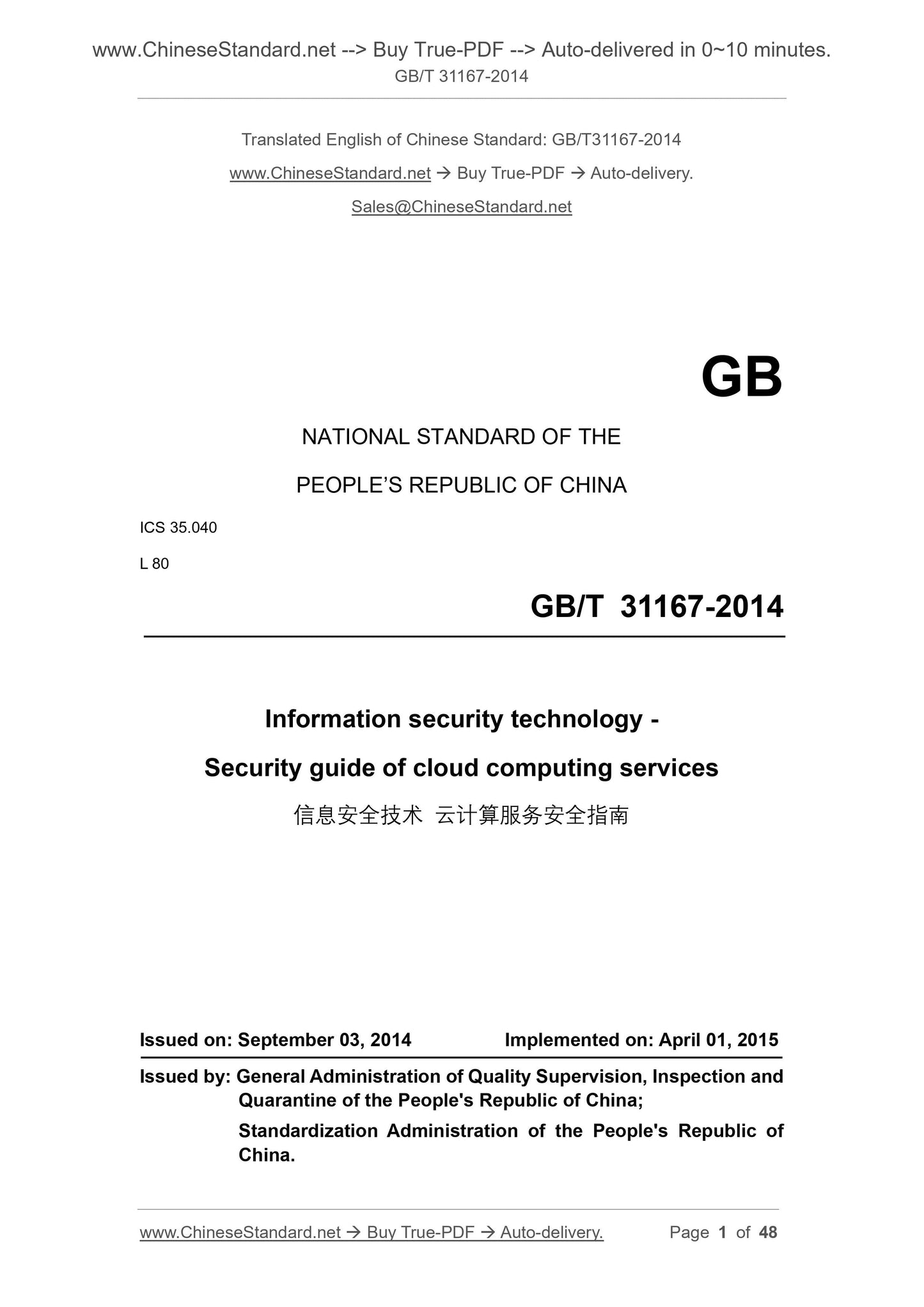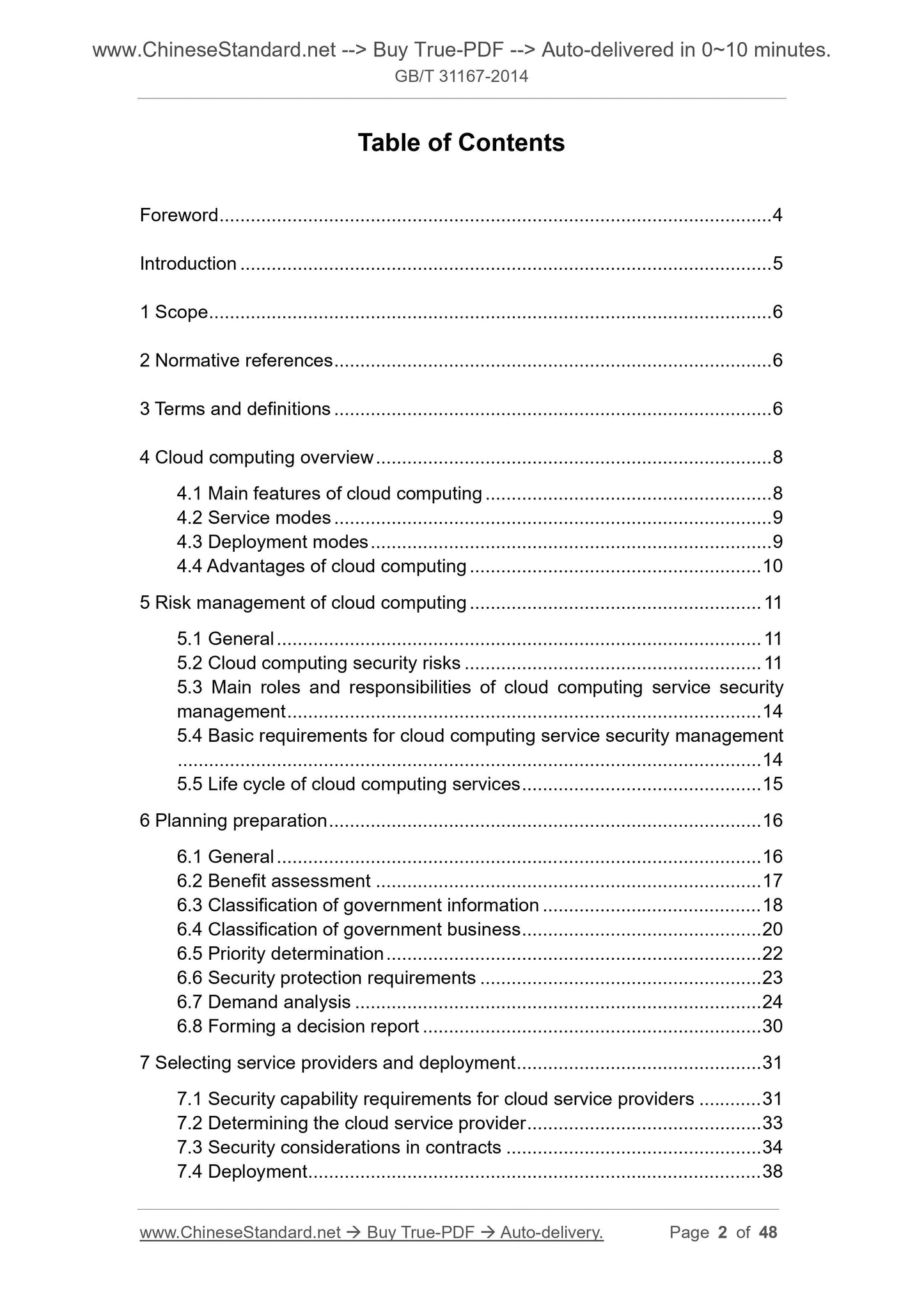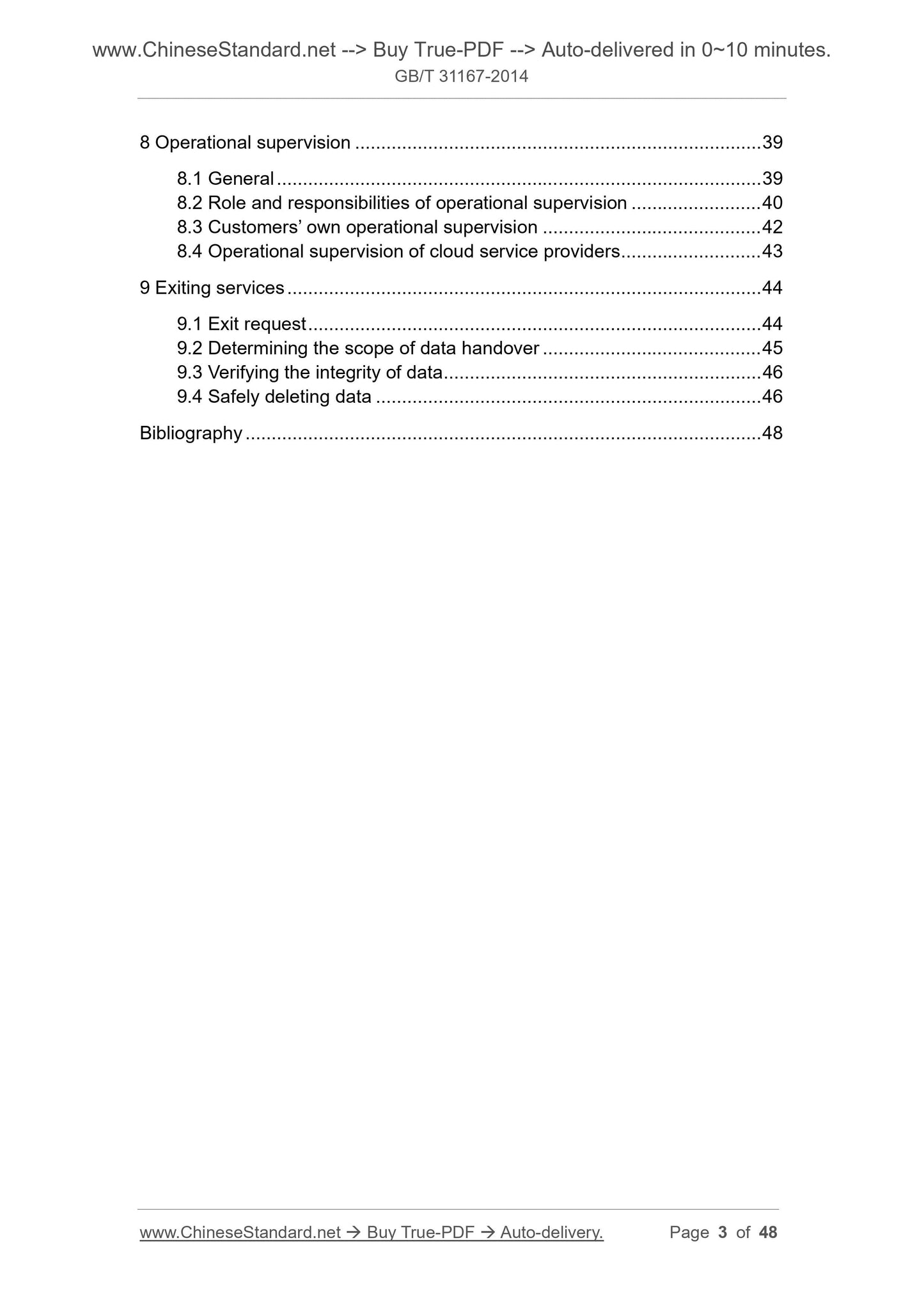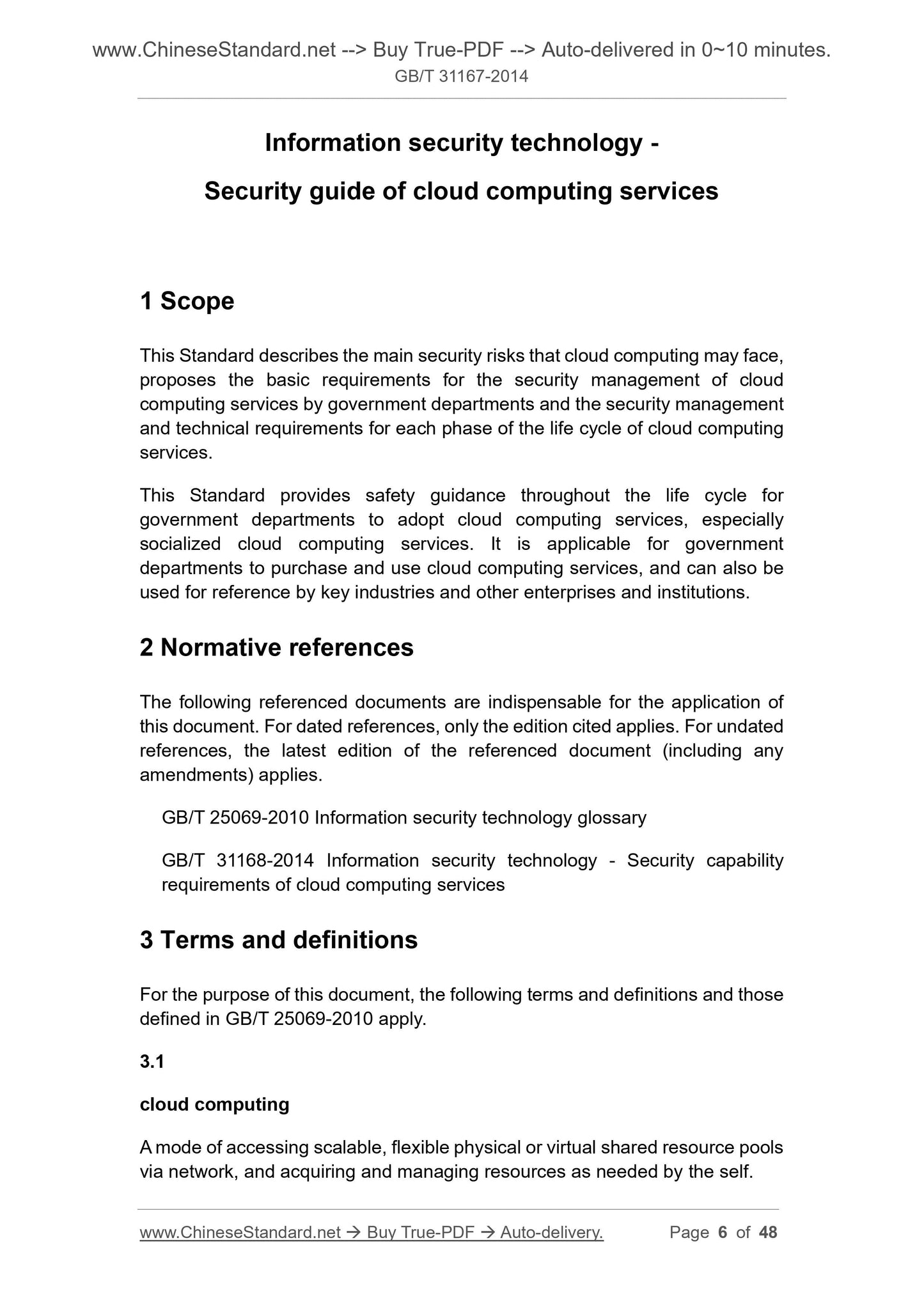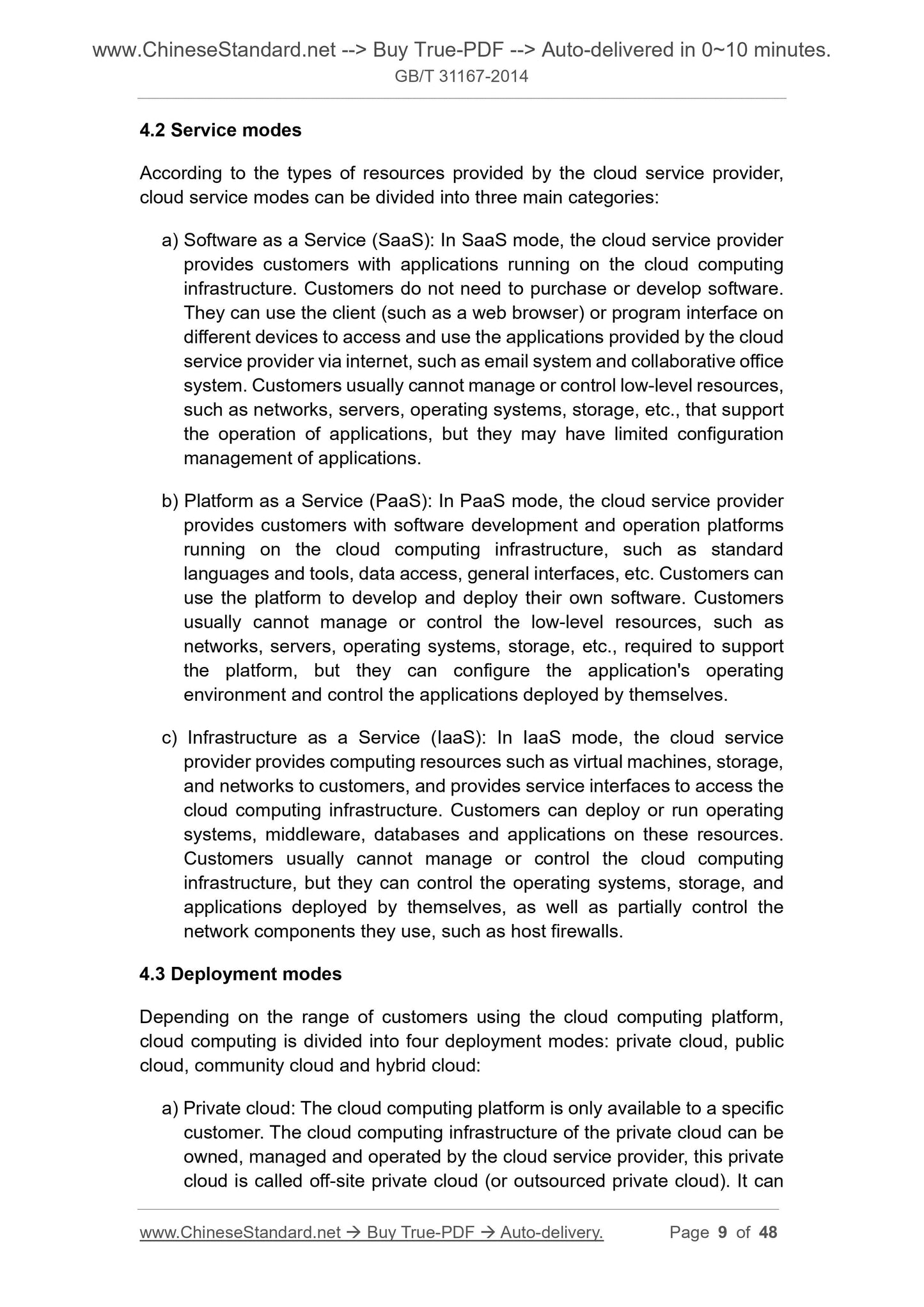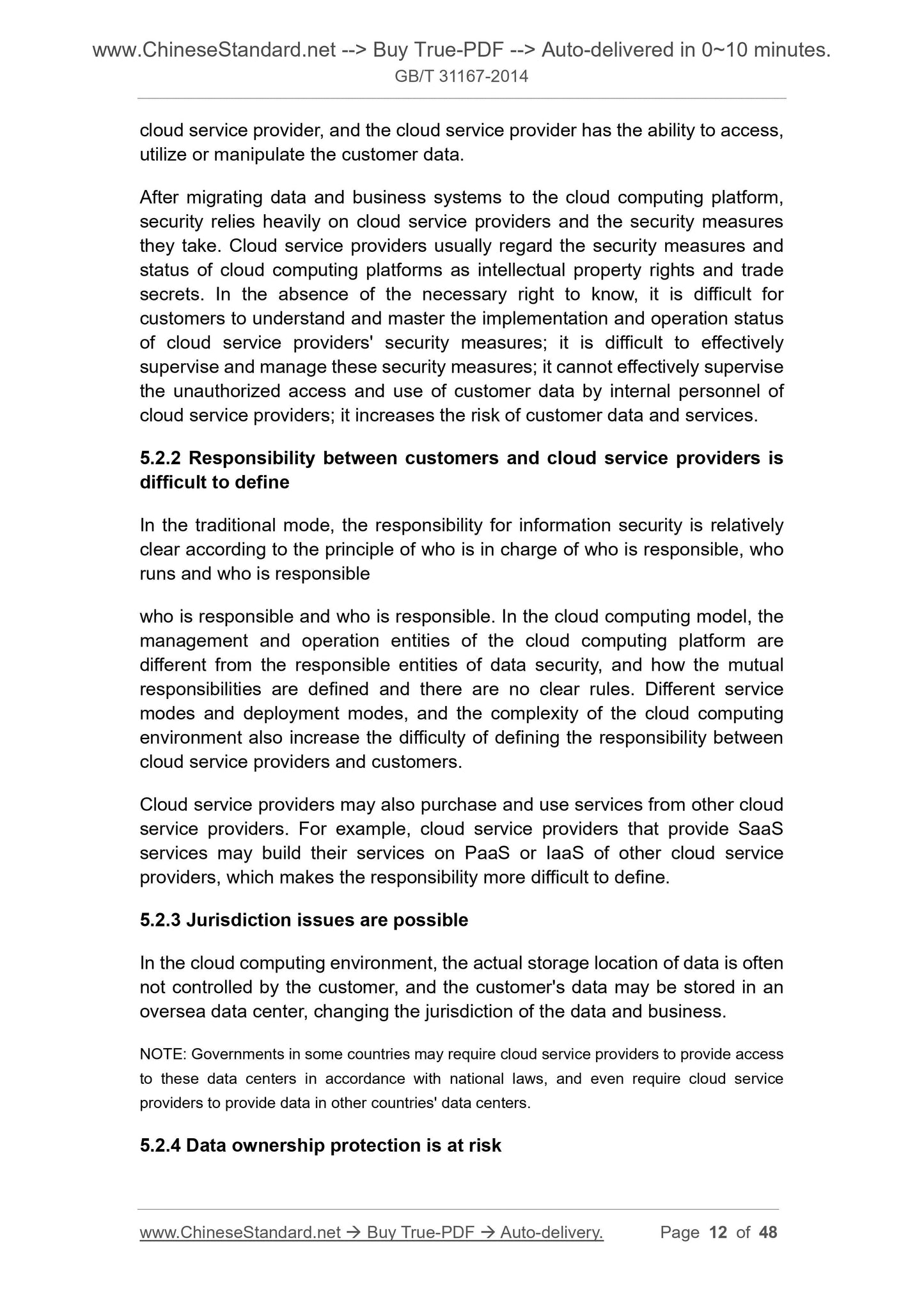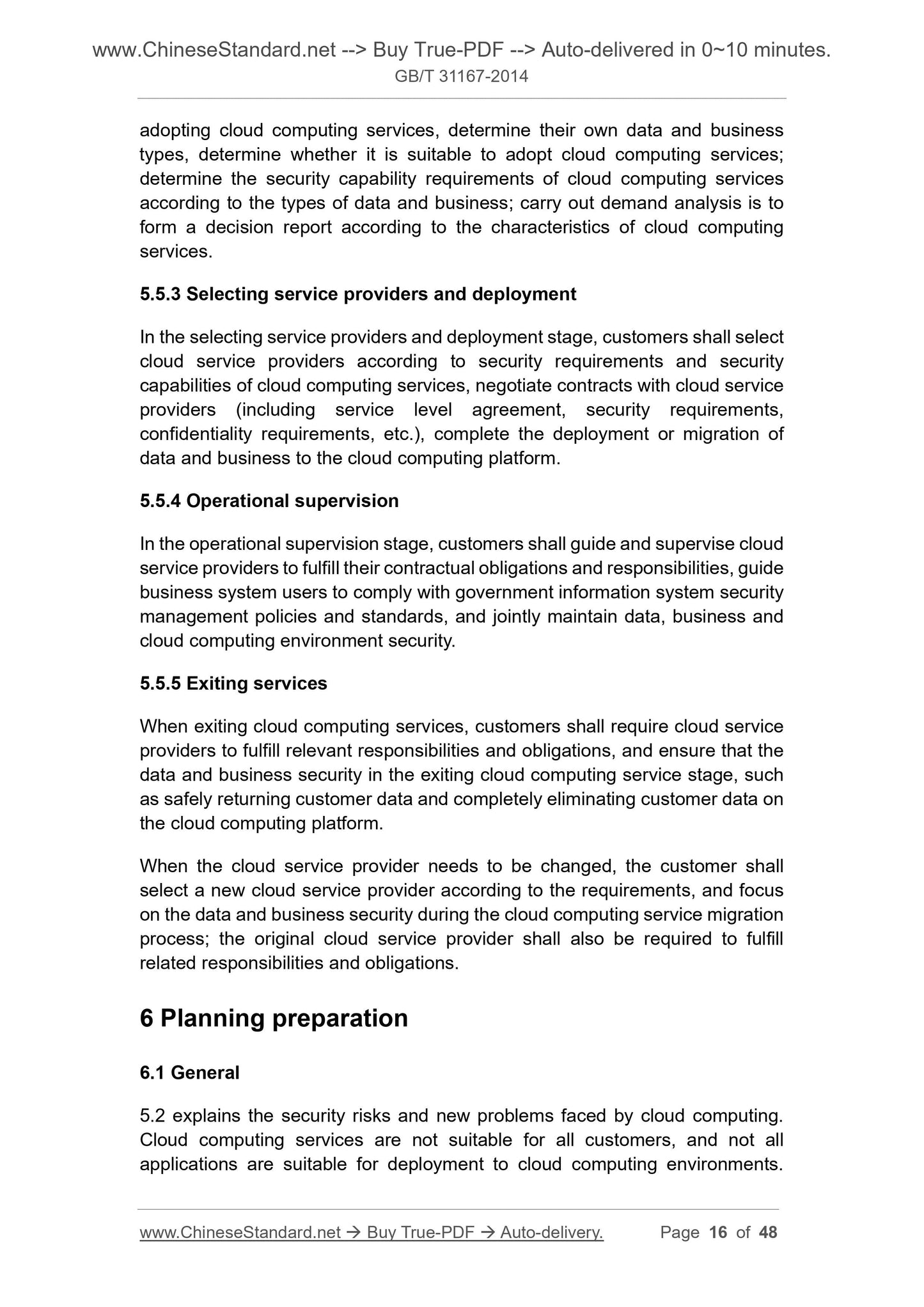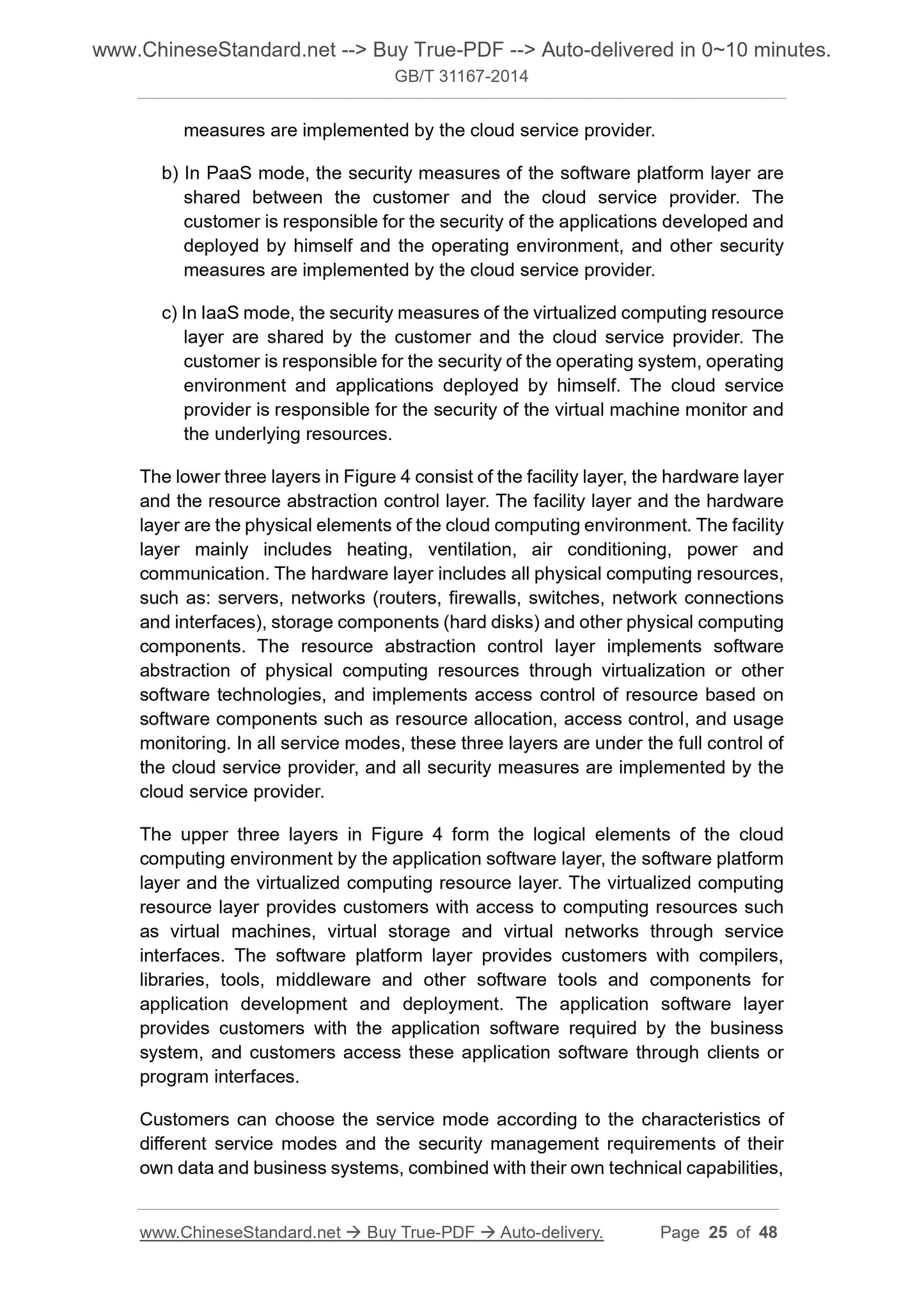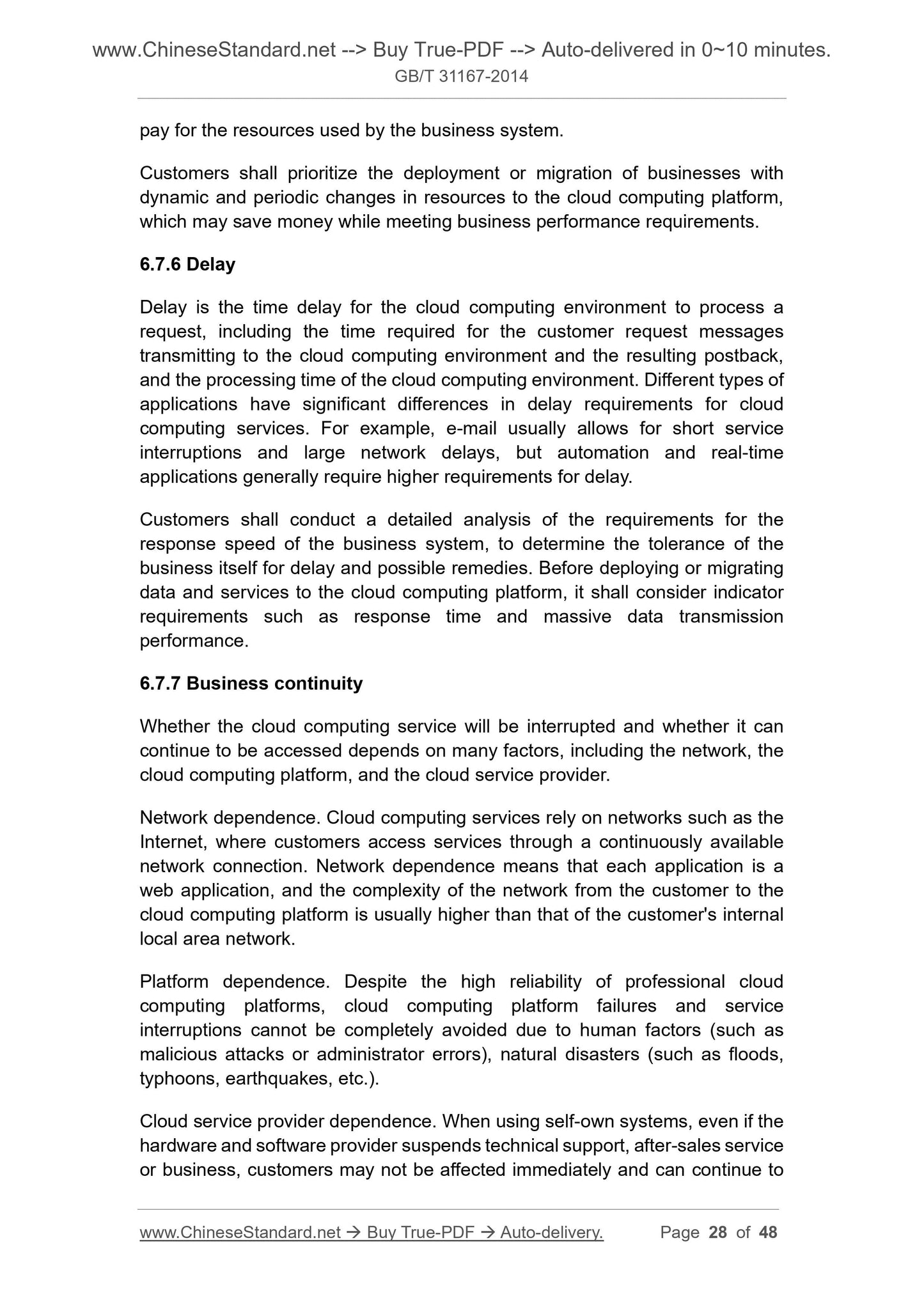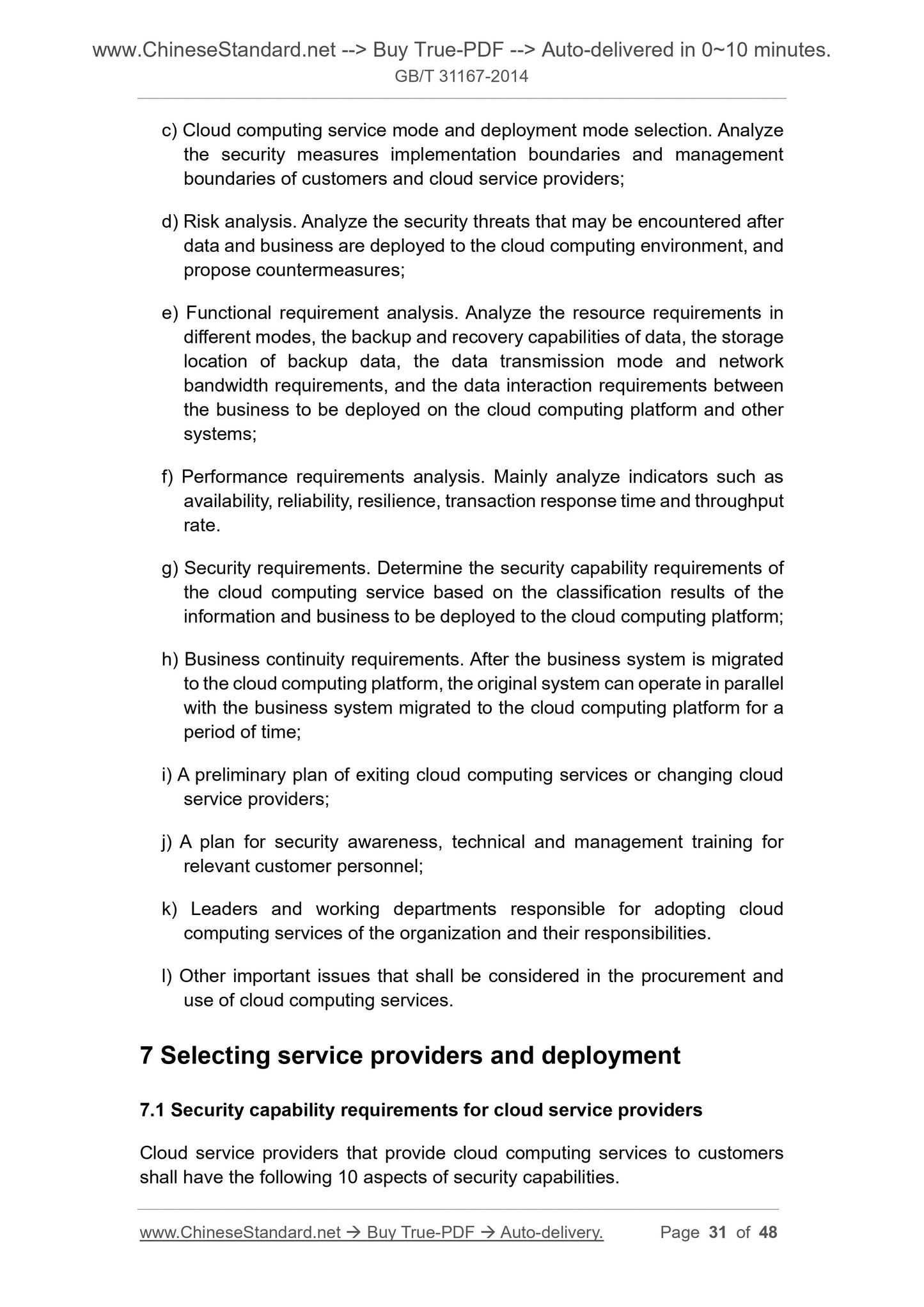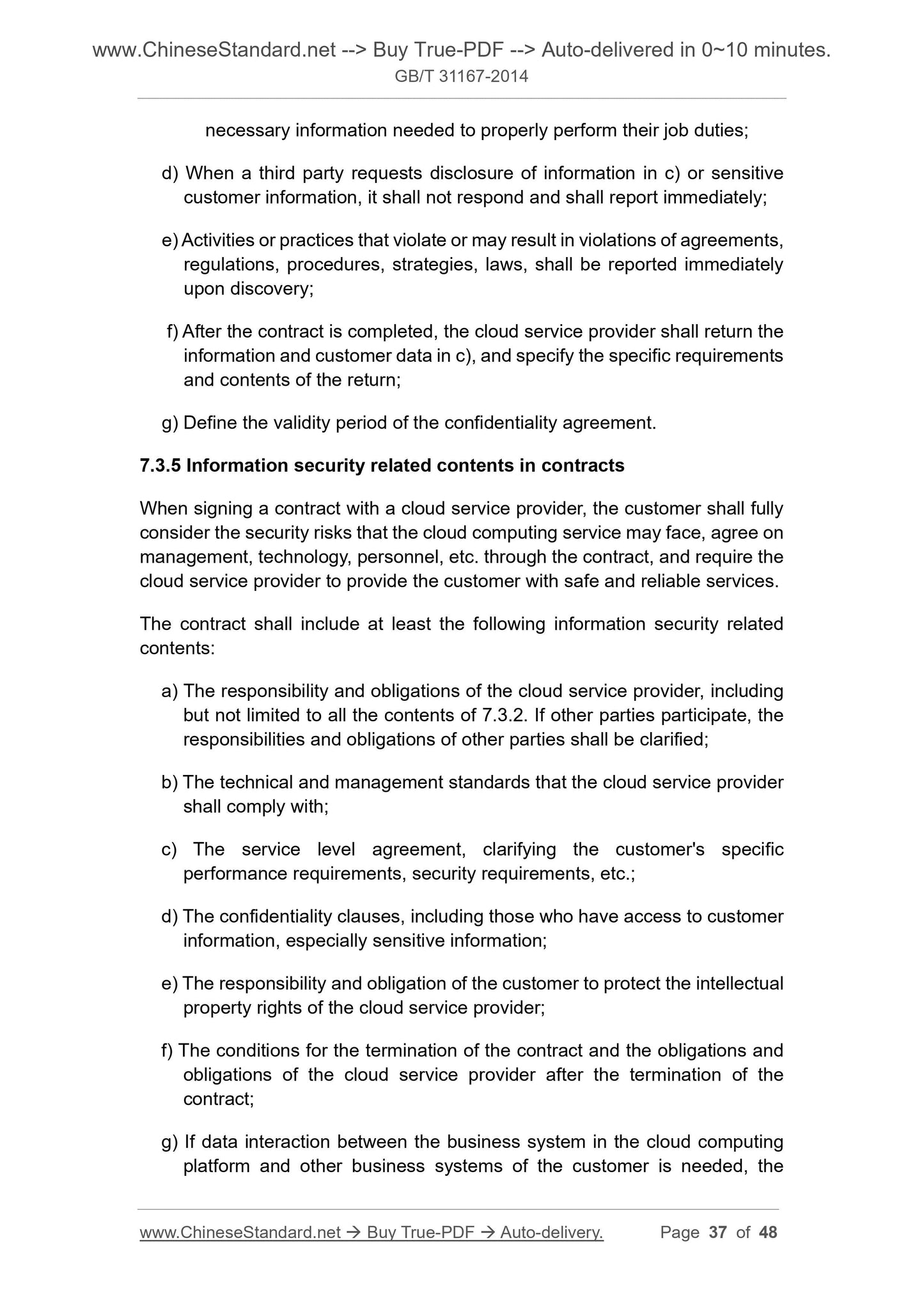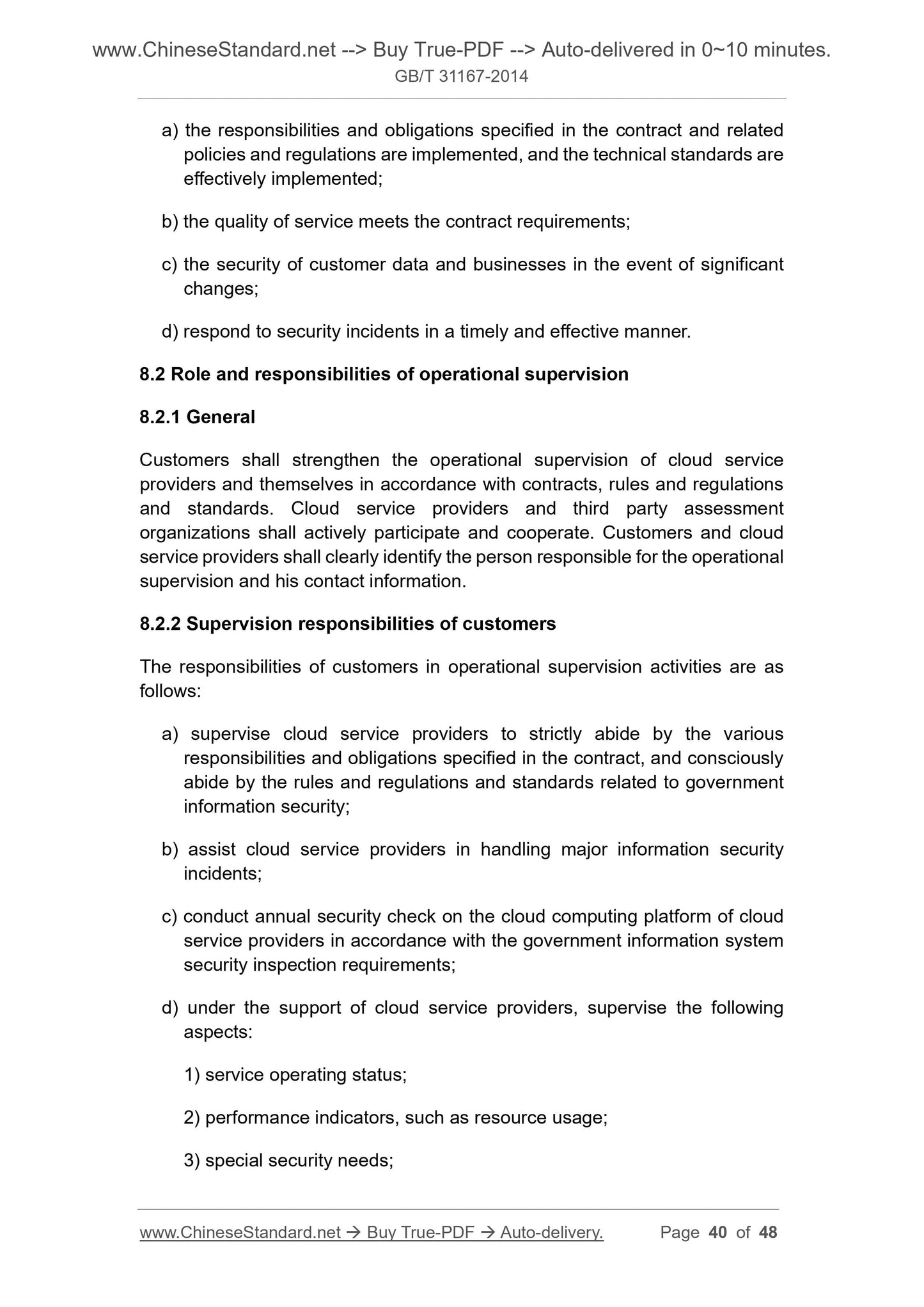1
/
of
12
www.ChineseStandard.us -- Field Test Asia Pte. Ltd.
GB/T 31167-2014 English PDF (GB/T31167-2014)
GB/T 31167-2014 English PDF (GB/T31167-2014)
Regular price
$150.00
Regular price
Sale price
$150.00
Unit price
/
per
Shipping calculated at checkout.
Couldn't load pickup availability
GB/T 31167-2014: Information security technology -- Security guide of cloud computing services
Delivery: 9 seconds. Download (and Email) true-PDF + Invoice.Get Quotation: Click GB/T 31167-2014 (Self-service in 1-minute)
Newer / historical versions: GB/T 31167-2014
Preview True-PDF
Scope
This Standard describes the main security risks that cloud computing may face,proposes the basic requirements for the security management of cloud
computing services by government departments and the security management
and technical requirements for each phase of the life cycle of cloud computing
services.
This Standard provides safety guidance throughout the life cycle for
government departments to adopt cloud computing services, especially
socialized cloud computing services. It is applicable for government
departments to purchase and use cloud computing services, and can also be
used for reference by key industries and other enterprises and institutions.
Basic Data
| Standard ID | GB/T 31167-2014 (GB/T31167-2014) |
| Description (Translated English) | Information security technology -- Security guide of cloud computing services |
| Sector / Industry | National Standard (Recommended) |
| Classification of Chinese Standard | L80 |
| Classification of International Standard | 35.040 |
| Word Count Estimation | 28,257 |
| Date of Issue | 9/3/2014 |
| Date of Implementation | 4/1/2015 |
| Quoted Standard | GB/T 25069-2010; GB/T 31168-2014 |
| Regulation (derived from) | People's Republic of China Announcement of Newly Approved National Standards No. 21 of 2014 |
| Issuing agency(ies) | General Administration of Quality Supervision, Inspection and Quarantine of the People's Republic of China, Standardization Administration of the People's Republic of China |
| Summary | This Standard specifies the main security risks of cloud computing may face, proposed government safety management and technical requirements for the basic safety requirements and lifecycle management of cloud computing services cloud computing services f |
Share
